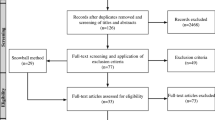Abstract
This paper presents some design-oriented reflections about a design idea—WaterCalls. This design concept is informed by findings from an ethnographic study of emergency service work. Two main components constitute WaterCalls—an ambient display consisting of bowls with water and a call queue in a graphical interface. The purpose is to support cooperation between several operators who work at different emergency service centres. One benefit of ambient displays in the emergency service centre is that information that is currently not available in the setting may be displayed in an unobtrusive way. In this paper, we suggest that it is important to consider how the ambient displays come into real use and how they fit into the work people actually do, namely, their work practices. For the development of interfaces like this, it is crucial to take into consideration how they are used in combination with more traditional graphical interfaces and other artefacts.








Similar content being viewed by others
References
Weiser M (1991) The computer for the 21st century. In: http://nano.xerox.com/hypertext/weiser/SciAmDraft3.html
Weiser M, Brown JS (1996) The coming age of calm technology. In: http://www.ubiq.com/hypertext/weiser/acmfuture2endnote.htm
Ishii H, Ullmer B (1997) Tangible bits: towards seamless interfaces between people, bits and atoms. In: Proceedings of the CHI’97 conference on human factors in computing systems, Atlanta, Georgia, April 1997
The disappearing computer (DC) initiative (2003) At: http://www.disappearing-computer.net/
Ishii H, Wisneski C, Brave S, Dahley A, Gorbet M, Ullmer B, Yarin P (1998) ambientROOM: integrating ambient media with architectural space. In: Proceedings of the CHI’98 conference on human factors in computing systems, Los Angeles, California, April 1998, pp 173–174
Wisneski C, Ishii H, Dahley A, Gorbet M, Brave S, Ullmer B, Yarin P (1998) Ambient displays: turning architectural space into an interface between people and digital information. In: Proceedings of the 1st international workshop on cooperative buildings (CoBuild’98), Darmstadt, Germany February 1998
Harper RHR, Hughes JA (1993) What a f—ing system! send ‘em all to the same place and then expect us to stop ‘em hitting: managing technology work in air traffic control. In: Button G (Ed) Technology in working order: studies of work, interaction, and technology. Routledge, London, pp 127–144
Suchman L (1993) Technologies of accountability: of lizards and aeroplanes. In: Button G (ed) Technology in working order: studies of work, interaction, and technology. Routledge, London pp 113–126
Whalen J, Zimmerman DH, Whalen MR (1986) When words fail: a single case analysis. Soc Prob 35(4):335–361
Whalen J (1995) Expert systems versus systems for experts: computer-aided dispatch as a support system in real-world environments. In: Thomas PJ (ed) The social and interactional dimensions of human–computer interfaces. Cambridge University Press, Cambridge, pp 161–183
Normark M (2002) Sense-making of an emergency call—possibilities and constraints of a computerized case file. In: Proceedings of the NordiCHI 2002 2nd Nordic conference on human–computer interaction, Aarhus, Denmark, October 2002, pp 81–89
Pettersson M, Randall D, Helgeson B (2002) Ambiguities, awareness and economy: a study of emergency service work. In: Neuwirth CM, Rodden T (eds) Proceedings of the ACM conference on computer supported cooperative work (CSCW 2002), New Orleans, Louisiana, November 2002, pp 286–295
Nelson L, Ichimura S, Pedersen ER, Adams L (1999) Palette: a paper interface for giving presentations. In: Proceedings of the CHI’99 conference on human factors in computing systems: the CHI is the limit, Pittsburgh, Pennsylvania, May 1999
Acknowledgements
The author wishes to thank Professor Bo Helgeson and professor Jeanette Blomberg, Isa Hardemo, Sarah Olofsson, Berthel Sutter and Hans Tap at the Blekinge Institute of Technology for their valuable comments, and Ninni Pettersson Wästberg for correcting the language. The research is funded by the Knowledge Foundation of Sweden’s “The Programme for Teacher Qualification Improvements in IT-subjects” (IT-lyftet). Dnr 23-350/99.
Author information
Authors and Affiliations
Corresponding author
Rights and permissions
About this article
Cite this article
Pettersson, M. WaterCalls: an ambient call queue for cooperation between emergency service centres. Pers Ubiquit Comput 8, 192–199 (2004). https://doi.org/10.1007/s00779-004-0277-8
Received:
Accepted:
Published:
Issue Date:
DOI: https://doi.org/10.1007/s00779-004-0277-8




